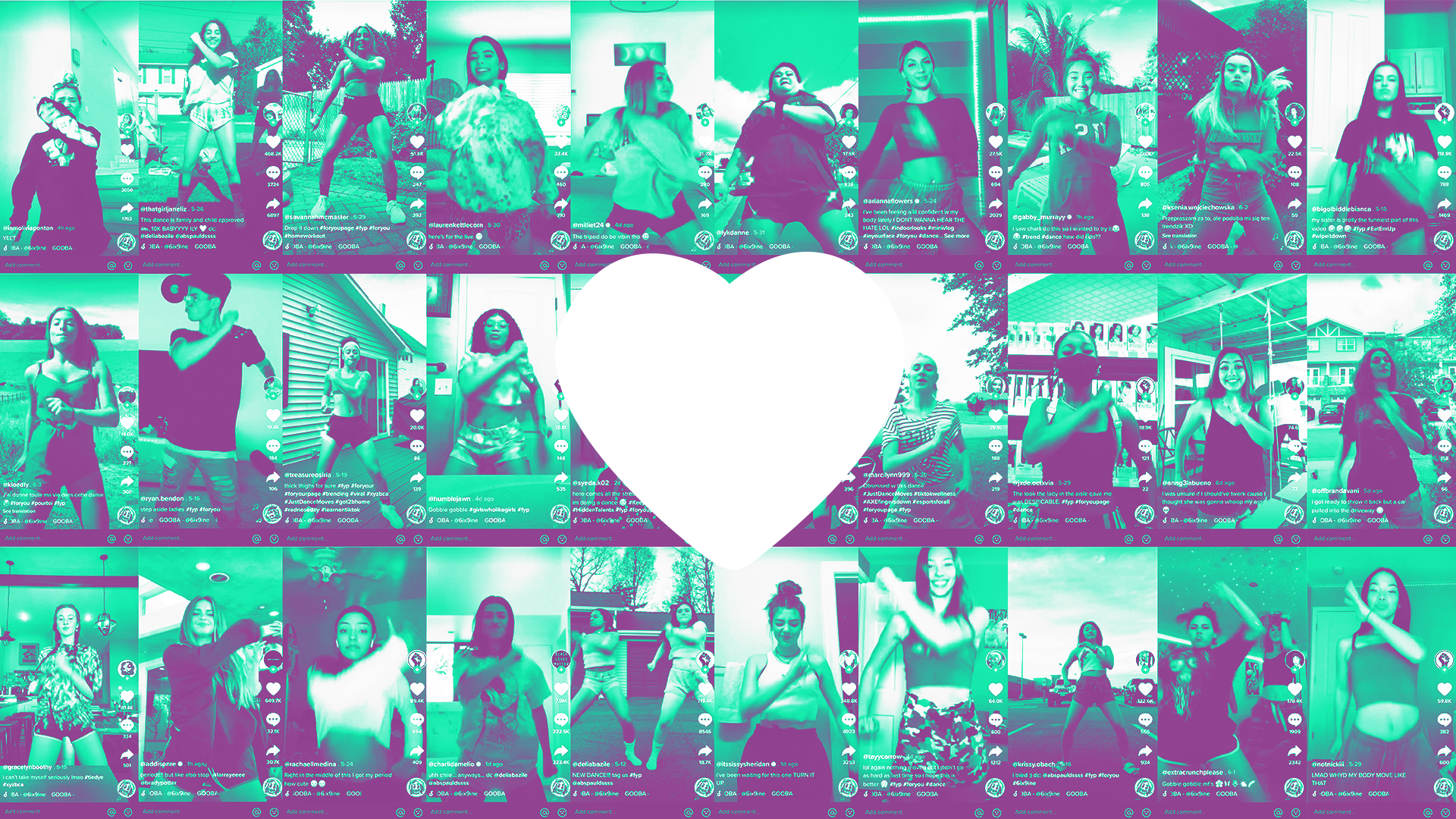IS YOUR BRAND SIMPLE, SPONTANEOUS AND LO-FI ENOUGH?
THE CHALLENGE OF MAKING A TIKTOK CHALLENGE
Over 1.5 billion users strong in four short years, TikTok has arrived. And with this platform comes a new chapter in the brand-marketing social-media playbook. What worked on Facebook, Twitter and Instagram is not going to cut it here. TikTok’s rapid rise in popularity brings a shift in media creation, and requires an evolution in content strategy.
The average user dips into TikTok’s video stream eight times a day to browse .15 clips, bingeing in five-minute bursts. Yearning to belong, be seen and create, the app’s youthful user base whips up posts chock full of music, filters, animations and other visual effects. Unapologetically unpolished and authentic, the content’s unique energy is driven by the popularity of fast-moving trends.
Like other social media, the TikTok crowd validates creativity via likes, comments and shares. Cultivating a personal brand requires constantly producing clips and evaluating how they’re received. One of the fastest tracks to immediate, positive feedback is participating in a TikTok challenge; a dance, stunt or other routine that can be copied and interpreted with a personal touch. Challenges go viral when there’s a strong, simple concept that translates globally—the Shoe Change Challenge, Eat on the Beat Challenge, Rotation Challenge and others all share traits like feel-good emotions, physical movement, and simple execution that audiences understand seconds after starting a clip, making it easy to jump on board.
For brands and marketers used to creating polished, premium and consistent messages, the first challenge is in letting go of some of the control. Youthful users don’t want to see invasive advertising, especially if brands break the normal operating behavior or unwritten code of conduct. As always, brands should understand the general mindset and motivation of the users and find ways to participate and provide value. Users want to belong, and they want to be noticed. So your brand is best served to help facilitate that sense of community, creativity and belonging. You don’t need to create the media. Instead, help the users be the stars and the vehicles of your message.
Here are three examples of brands doing it right:
CREATE A CHALLENGE THAT AUTHENTICALLY FEATURES YOUR PRODUCT
#YOPLAITCUPRELAY
Yoplait asked users to play a fun game of flip-cup with their yogurt. Additionally, Yoplait donated $1 for every video posted (up to $200,000) toward a timely, relevant charity, Feeding America.
Why This Worked:
The challenge was a simple, wholesome and universally appealing activity for TikTok users.
It was smart brand exposure, requiring users to physically interact with their product in a fun and authentic way.
Users felt aligned to charitable giving.
SUPPORT YOUR TRADITIONAL CAMPAIGN WITH A TIKTOK CHALLENGE
Chipotle created a Halloween TikTok contest challenge asking users to creatively share their costume. Participants scored burrito discounts in-store on Halloween, with some winners earning free food for a year.
Why This Worked:
The challenge aligned to a preexisting in-store promotion.
It was crafted for the way users uniquely share on this platform.
It appealed to a variety of creative communities: comedians, 3D and motion graphics animators, make-up artists, pet-lovers.
BUILD AFFINITY BY PARTICIPATING AS A COMMUNITY MEMBER, NOT A BRAND
The Chicago Bulls gave their mascot, Benny the Bull, a TikTok account. At NBA games, Benny dances, pulls pranks and entertains children. On TikTok, he does the same.
Why This Worked:
The brand emphasized the fun, non-sport, family-focused aspects of the Chicago Bulls.
It built brand affinity by aligning their character’s interests and actions with that of the TikTok user—dances, challenges, humor, etc.
They spent far less money by participating in the existing meme and dance-challenge culture instead of creating their own challenge campaign and spending money on influencers.
__
Written by Matt Graff, Associate Creative Director at Nemo Design
If you like this article, share:
